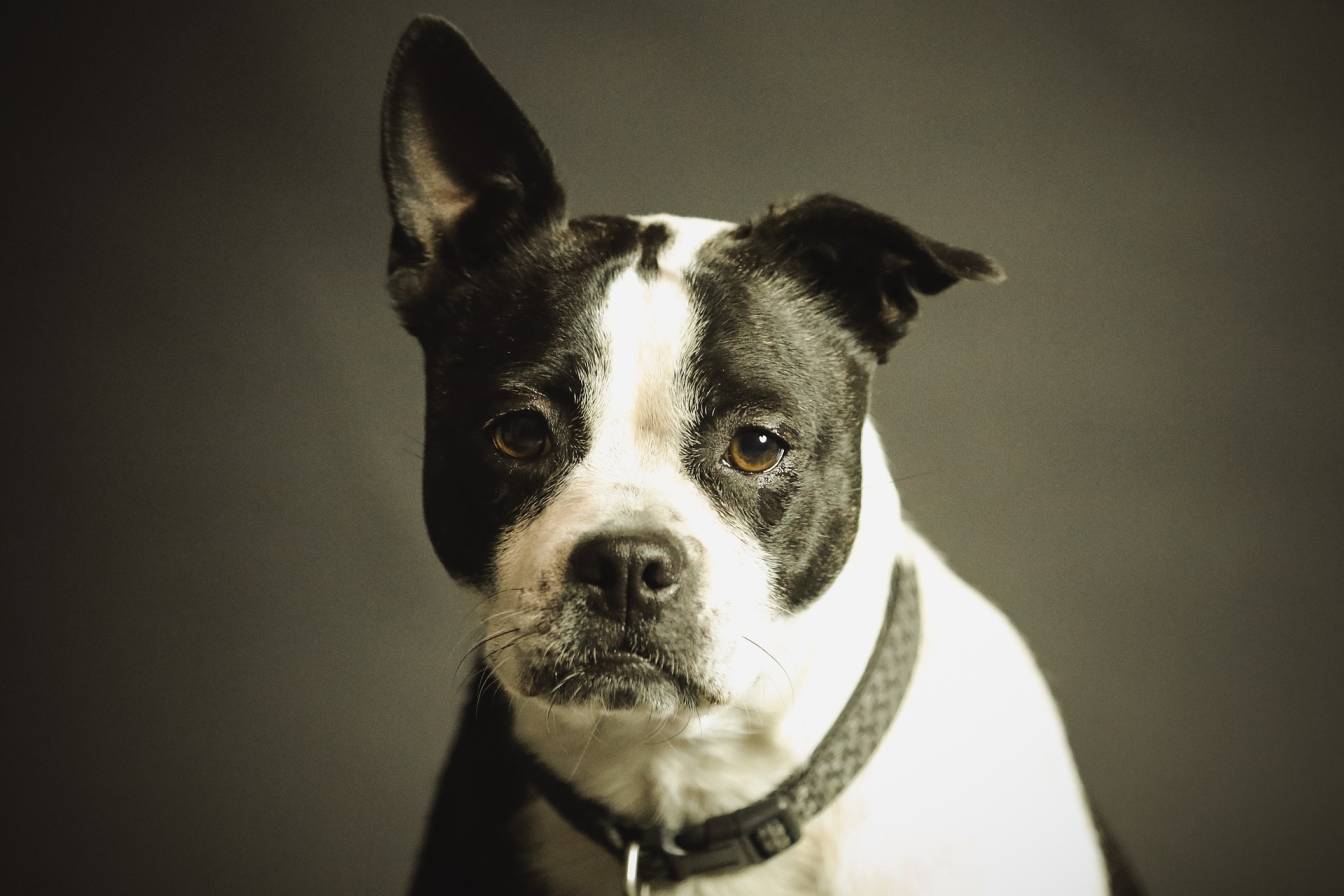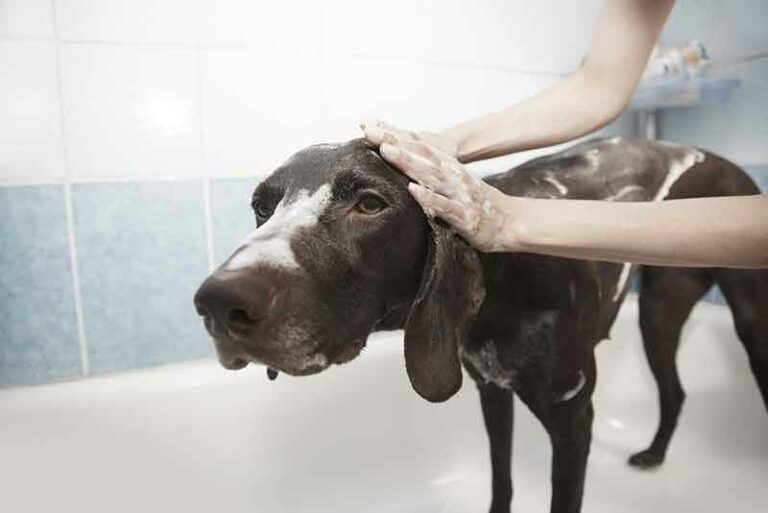How Tight Should A Dog Collar Be? Two-Finger Rule
Ever wondered, “How tight should a dog collar be?” Finding the paw-fect fit is crucial for Fido’s comfort and safety. In this guide, I’ll unravel the leash on collar sizing, ensuring your furry friend struts in style without any discomfort. Let’s dive into the doggy wardrobe and find that tail-wagging sweet spot!
A collar is not merely a fashion accessory for dogs; it is mandatory for a pet dog for several reasons. In many countries, a collar is a legal requirement for a pet dog, especially when you take the pet outside.
A collar ensures the safety of your pet dog, making things a lot easier in cases of emergency. Even though a collar gives certain benefits to your pooch, many dog owners are reluctant to put a collar on their pet because they believe dogs find it uncomfortable.
Putting and removing a collar back and forth can be frustrating for your dog and you. However, if you have a clear understanding of collar maintenance, this will not be something that makes you worry.
Most importantly, your pet dog will not find it uncomfortable to wear it. This article will address the issue of how tight should a dog collar be. This will be important to all dog owners, so keep reading to educate yourself on this matter.
Your pet dog’s collar should neither be too tight nor too loose, but how can you properly understand to what extent it should be tight? You can easily sort out this issue through the two-finger rule. Simply put, if you can insert two fingers inside your dog’s collar without forcing, that is considered the correct adjustment.
If your dog’s collar is too tight, the dog will find it highly irritating. Contrary to that, if it is too loose, that will also make the dog feel uncomfortable, and they will attempt to get off it. Still, if you use the correct method and fix it to the proper measurement, your dog will not feel uneasy wearing it.
When you first put a collar on your dog, it will make the dog feel unusual; however, over time, it will get used to it. Nevertheless, if you want to make your dog feel familiar with the collar, you must fix it in the correct way. Most dogs hesitate to wear a collar if it is too tight.
When the collar is too tight, it causes irritation and discomfort to your pet. To avoid this, you must understand how tight it should be and adjust accordingly.
A dog collar not only helps to indicate the ownership of your pet, but it is also vital to ensure your pet’s safety. Therefore, every dog parent should know about collar maintenance.
How do I know if my dog’s collar is too tight?
Have you ever noticed your pet dog attempting to get rid of the collar? Or does your pet dog run away whenever you try to put the collar on them? This often happens if you put the collar too tight on your dog.
Wearing a tight collar will not make your pet dog happy, so they will try to remove it, and once you remove it, the dog will act better. However, there are instances where you must put a collar on your dog. For example, when you take your dog out for a walk, a collar and a leash are a must to ensure your pet’s safety as well as others.
Therefore, you must train the dog for the collar, and the process will be a lot easier if you know to which length you should adjust it. If the dog seems irritated by the collar, how can you ensure it happens because the collar is too tight? Let’s find out.
As mentioned, a collar is necessary for a dog for multiple reasons, but all your pet dog needs is comfort. So, if they find the collar too tight, they will attempt their best to let go of it. Below are some signs that your pet will indicate if the collar is too tight.
- Skin irritation
Dog collars are made of various materials, most commonly leather, nylon, and cotton. When the collar rubs too closely into your pet dog’s neck area, it will lead to skin irritation. Notice if your dog often itches around the neck area when wearing the collar.
Moreover, if you notice redness, inflamed skin, flaky skin, or hair loss around the area, that shows the collar is too tight for your pet.
- General discomfort
Sometimes, your dog might not face skin problems such as rashes due to the tightness of the collar, yet they will experience pain and general discomfort.
Remember, the neck is a sensitive area, so if the collar puts too much pressure, the dog will feel uncomfortable. Keep a close eye on the dog and see if they act odd when wearing the collar.
- Chocking
What is the worst thing that could happen if your pet dog’s collar is too tight? They might choke. If the collar is highly tight, it can close off the airway, making the dog choke.
If you notice your dog coughing, breathing stressfully, and rubbing its face on the floor while wearing a collar, that might happen due to the tightness of the collar. So make sure you lose it as soon as possible.
How loose or tight should a dog collar be?
It is understandable that if the collar is too tight for your pet dog, it will make the dog feel uncomfortable. So, if the collar is too tight, it certainly creates trouble.
What if the collar is too loose? Loose collars can also cause some risk, so it is crucial to guarantee that your pet dog’s collar is neither too loose nor too tight. However, this might sound subjective to someone. So, how can you properly determine that your dog’s collar isn’t too loose or tight?
Sometimes, you might be unable to identify whether the collar is too tight or loose for the dog observing it from the outside. Therefore, you can follow these simple mechanisms to see whether the collar is adjusted to the appropriate length.
In the previous section, we focused on some common gestures that you can observe in a dog if they wears a tight collar for some time. Apart from following those signs, you can gently insert two fingers inside the collar and check whether they get stuck.
If you can place the fingers without pressure, you have put the collar correctly. If your fingers get stuck inside, or you have to insert them forcefully, the collar is too tight. In such instances, you have to loosen the collar.
On the other hand, if the collar slides through your dog’s ears, that means the collar is too loose. So make sure your dog’s collar doesn’t slip away through its ears, yet It should be loose enough to move around the dog’s neck effortlessly.
Another essential fact to mention is that the tightness of a collar changes when dogs grow up. Puppies grow pretty fast; therefore, you cannot use the same collar for a long time. As the puppy grows, you should change the collar size; if not, it will be too tight.
Therefore, it is essential to get neck measurements when you get your dog a new collar. Use a tape and measure the lower neck of your pet. Lower neck measurement is the safest to get the exact collar’s size. So it will not be too tight or loose.
What is the two-finger rule for collars?
You may already understand the two-finger rule for collars if you have read up to this point. While there are varying opinions regarding the two-finger rule for collars, it is typically considered the easiest way to identify whether your dog’s collar is adjusted the correct way.
Once you put the collar into your dog, gently insert two fingers inside the collar. If the collar is not too tight, your fingers should easily slide between the dog’s collar and skin. Even though you do not have to force your fingers to slide in, fingers should still fit in between the collar and neck.
Suppose there is a considerable gap between the two fingers and the collar, which means the collar is too loose for the dog.
How many fingers should I be able to fit in my dog’s collar?
The Two-finger method is generally the recommended way to measure whether the dog collar is tightened to the appropriate length. As the name implies, you should be able to insert two fingers inside the collar.
If two fingers fit without force, the collar is tight enough for the dog. If you can slide more than two fingers, that indicates the collar is too loose; if you can’t insert two fingers easily, you must loosen it until you can.
Final thoughts – How Tight Should A Dog Collar Be?
Dogs might not be the biggest fans of wearing collars; they mainly deny wearing collars due to the discomfort they cause. However, if you know to what extent the collar should be tight,’ your pet dog will not find it uncomfortable.
Dog owners should always be mindful of this matter because if the collar is too tight, it will negatively impact the dog, making them get rashes and even choke. The Two-finger rule is the most common and easiest way to understand the correct tightness of your dog’s collar.
If you can insert two fingers, you put the collar correctly. Anything less or more than two fingers is not the correct tightness. If that is the case, make sure you adjust it accordingly.





